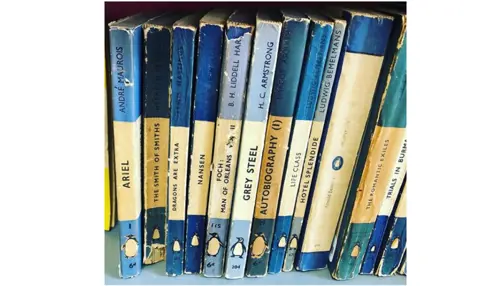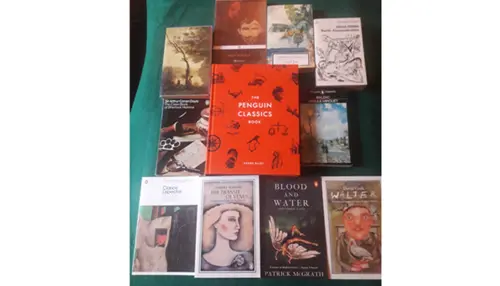
The mission statement of the series was to offer classics of literature to the general reader who was put off by “the stilted, old-fashioned and otherwise un-English style which has too often been adopted by translators.”
There are currently around 1,200 Penguin classics in print, covering 4,000 years of human thought. I’ve worked out that if you wanted to read all of them at the rate of 50 pages a day, it would take you 27 years. This book helps you locate the highlights; it’s a wonderful book for browsing by being beautifully arranged and designed. Its basically an annotated catalogue of all the Penguin Classics currently in print, and includes a fascinating appendix containing pictures of some of the most sought after, out of print Penguins.
The beauty of the book is that it is obviously compiled with so much love and care, that it reads like a love letter to world literature and will inspire any reader to want to read more. The book is in itself is a masterpiece of organisation, in the way that it orders all the books in an easily coherent way – by era, then region, then literary form – which makes the connections between writers and periods logical, It shows the development of literature from one people to the next, and helps fill those gaps in your knowledge of classical literature.

It also contains lots of intriguing snippets of biographical information about authors, particularly to do with their deaths. For example, did you know that Robert Louis Stevenson ‘died at the age of 44, while making a batch of mayonnaise.’? Nietzsche’s final period of ill-health began when he collapsed in the streets of Turin in 1889, while attempting to prevent a horse from being flogged. Rilke died shortly after gathering roses in his garden, when he pricked his finger on a thorn: the wound quickly became infected and he never recovered. Elizabeth von Arnim’s gravestone reads parva seda apta – ‘small but sufficient.’
Concurrent with the story of literature, the book tells the story of Penguin Classics as a unique brand which has evolved over the decades, especially in the way that the books are designed. The original Penguin Classics had plain covers framed by a coloured border. Over time the graphics became increasingly sophisticated and would illustrate, characterise, make jokes about and otherwise tell you more, at a glance, about the content than the old liveries could. The series retains a distinct style and many of these covers are masterpieces of picture research. Leafing through the book reminds you of how gorgeous many of these designs are. Readers of a certain age will probably recognise a remarkable number of them as books they knew, or books they have on their shelves, mellowing into crisp, brown-edged age.
Pleasing both author and reader with the right book cover is always going to be a challenge and novelists tend to be quite prickly in this regard. J D Salinger would never allow anything but type on the jackets of his books; the most extravagant of his Penguin covers is the black and white type on silver gracing Franny and Zooey.
Maybe this is as it should be. There is nothing so unsettling for a reader than having their enjoyment of a book spoiled by a lurid or unappealing cover. As a teenager I was put off reading Tess of the d’Urberville’s for years because the cover of my edition had a rather dodgy picture of a milkmaid. The worst trap an illustrator can fall into is to try and depict characters from the novel, something which should be left to the reader’s imagination. Penguin originally had the rights to Anthony Powell's Dance to the Music of Time sequence and they used for the covers drawings by Osbert Lancaster which tended to focus on the settings of the stories. Later, when Powell moved publishers to Collins, the covers were illustrated by Marc Boxer, and he chose to feature his comic impersonations of the main characters, which are striking and distinctive. Once seen, his caricatures of Kenneth Widmerpool, Charles Stringham and X Trapnel tend to linger in the imagination and are more than a bit intrusive.
Often at Chapter Two we hear customers cry out when they stumble upon a book with a familiar cover, which is like re-encountering a long lost friend. For our volunteers too, every new donation is a potential box of delights. Its extraordinary that even the sight of a good book has the potential to cheer us up, which is why, when most bookshops are closed, boxes of books like The Penguin Classics Book are the perfect pick me up to start the new year.

Mark Jackson-Hancock, Chapter Two book expert.






Share Article